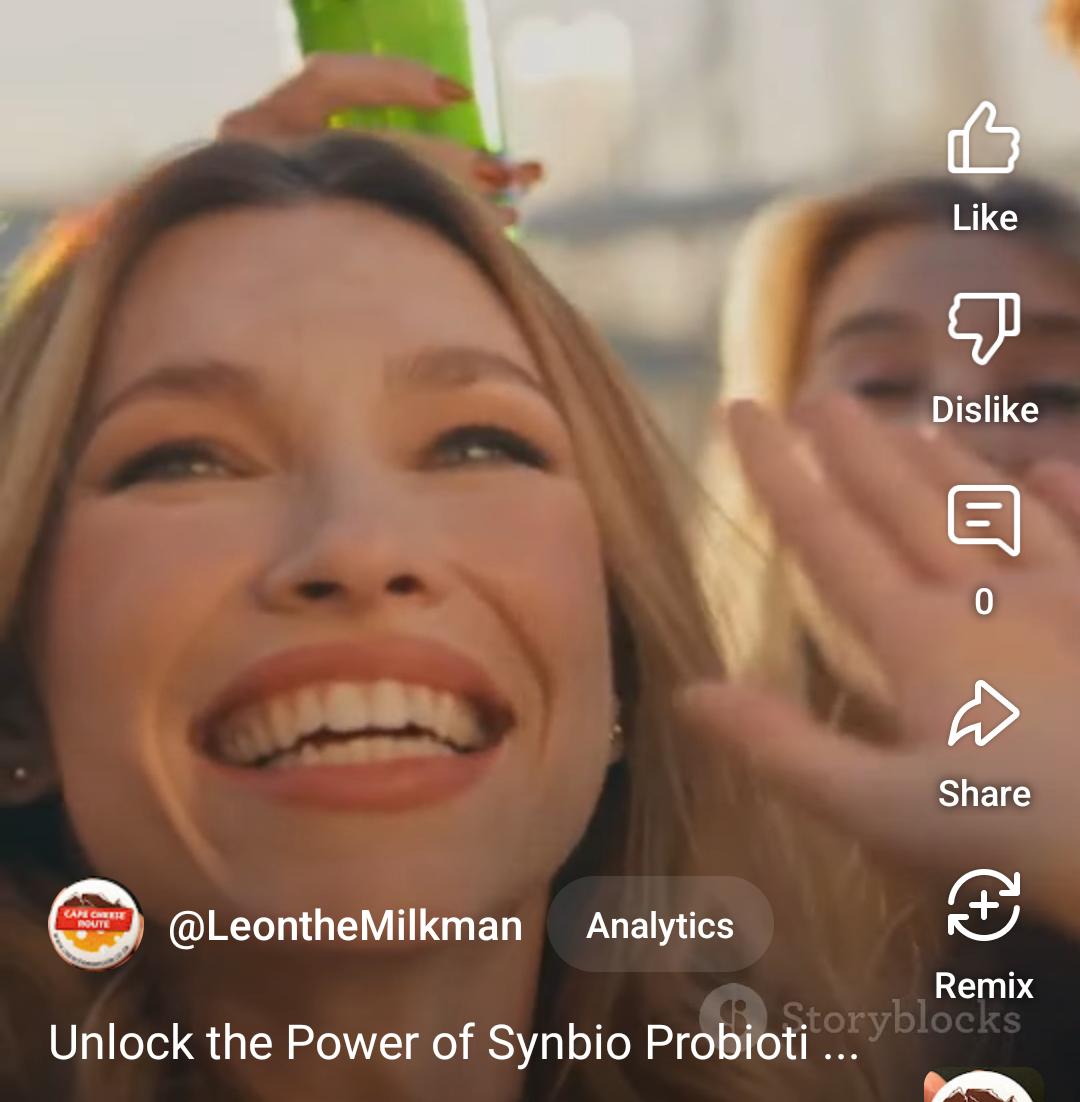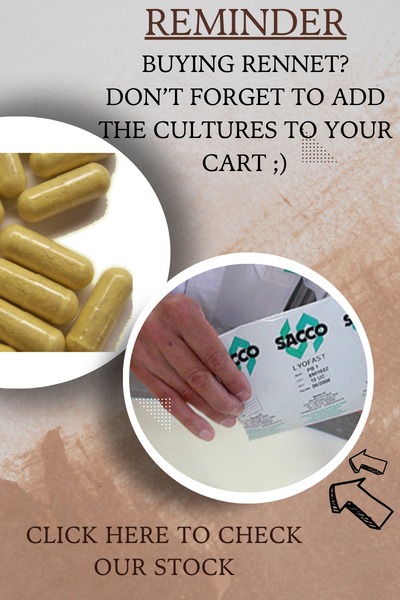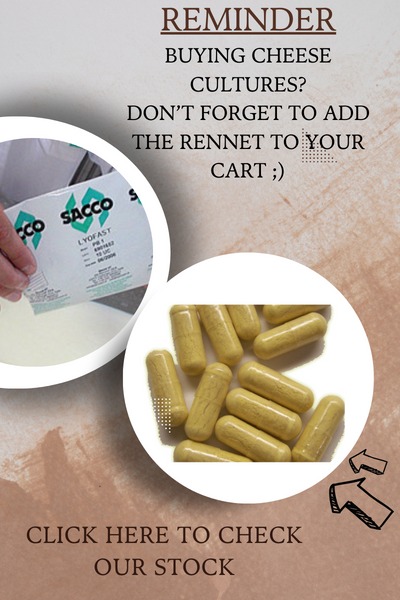Faq
Yes, of course. The price/cost of the milk is the determining factor. The cost of all the other ingredients are small compared to the milk. Choose the right product for your market and your production possibilities. You have to weigh up the yield of the product(how many kilos you get per kilo/litre of milk), the shelf life, the maturation time needed, the cost of equipment for the specific cheese/product, the cost of packaging(e.g. feta tub vs vacuum seal), etc.
When you want to learn how to make cheese and looking for a DIY cheese making kit, I always recommend to first get a kit that makes a fast, non maturing cheese, like halloumi, ricotta, mozzarella, cottage cheese etc. This helps you learn the basics and immediately see the results, if it is not as expected, you change the method and tomorrow you see the results. If someone was to start with a parmesan - wait 9 months and discovers that it is terrible - they are probably not making cheese again ;-) Then progress to longer and longer maturing cheeses during your cheese making journey.
Where to get the ingredients/kits mentioned in this article:
What to do if milk doesn't become curd/Why is the milk not coagulating/Curds not forming/Curd not setting
When it comes to cheese making trouble shooting this is probably the question we get the most. The question usually arises with rennet set cheeses, but milk can set/coagulate in 3 ways during normal cheesemaking:
- Acid set (Yoghurt, kefir, paneer, amasi, etc)
- Sweet rennet set (Halloumi)
- Combo of acid and rennet(most continental cheese types)
Usually the issue does not lie with the rennet, but with the milk - and specifically with pasteurisation(not homogenisation). The issue is with retail milk being over-pasteurised for maximum shelf-life. This causes the milk protein to be denatured and the rennet enzyme does not "recognise" the protein. Much like the change we see from raw egg to cooked egg. Think about this: calves drink raw milk in nature, so the enzyme is made to work on raw milk. If you do not believe me, take some UHT long-life milk and put some rennet in it....nothing happened? Right you are!
Also remember that effective pasteurisation is a combination of temperature and time, so even though you do not exceed the recommended temp, if you take too long to cool it down, then you are also over-pasteurising.
So with rennet coagulation we have 3 main factors:
- the rennet
- the milk protein(casein)
- soluble calcium(calcium chloride addition)
If one milk has a lower protein level than another, then all factors considered, it will set slower and weaker. If milk is diluted by water, then the calcium and the protein in the milk, will be less and affect the setting.
Antibiotics do not have an influence on setting: https://www.youtube.com/watch?v=8i_20A8nCd8
With new rennet or milk source, I always like to do a little test, where I heat half a cup of the milk in the microwave to 35C and then add a small amount of rennet - if the milk coagulates within half an hour, then it will work with the bigger volume too. This saves you from putting 20 litres into a pot, going through the motions, only to discover that the milk is not setting.
So where do I look first for problems:
- over-pasteurisation
- dilution
- mastitis milk(this lowers casein and produces other enzymes not helpful in your cheese making, and lifts pH)
- too high or low temperatures(too high will knock-off the rennet and too low will have you waiting forever)
- As rennet is a stomach enzyme it works great in acid environment, so high pH will negatively affect it.
Where to get the ingredients mention in this cheese making FAQ:
https://www.youtube.com/watch?v=bHylOKTVt7w
Please watch the above Youtube link or read below:
https://cheeseconsultant.co.za
Cheese recipes do not always work, because of the amount of variables involved. If I bake a cake with the same flour and other ingredients, oven etc. I can get repeatable results, but with cheese making each batch of milk can be different in relation to fat, protein, lactose and other components. The cooling and heating time/speed from one vat to the next may vary, even the time it takes to empty the vat, when separating the curds and whey. So we must depend on cheesemaking principles first and then adapt our basic methods according to the results at a specific place and for a specific cheese. #cheesemaking #principles #southafrica #leonthemilkman #capecheesemaking #alivingway
Ralph Waldo Emerson wrote, “The man who grasps principles can successfully select his own methods. The man who tries methods, ignoring principles, is sure to have trouble.”
The different types of “rennet” or milk coagulation enzymes are:
- from animal origin
- from GMO micro-organisms
- Curdling enzymes from plants
- Curdling enzymes from Non-GMO micro-organisms
Animal origin is the “mother” of rennet giving the highest yield and best taste.
Microbial rennet from GMO micro-organisms has the same chemical composition as animal, with some side reactions, but very close. The comparison is basically like artificial vitamin C and natural vitamin C.
The curdling enzymes from plants like, figs, papaya, etc. are suitable for lacto-vegetarians.
Curdling enzymes from Non-GMO organisms are generally, Kosher, Halaal, vegetarian.
Rennet strength is classified in IMCU - International Milk Clotting Units.
We need 30-40 IMCU per litre of milk, so divide the rennet strength by 30 and you will get the amount of litres that can be set with it.
So 1800 IMCU/gram rennet powder divided by 30 = 60, so 1 gram can set 60 litres.
Personally I like to dissolve the rennet in about .25% water of the total, so for 60 litres that is about 150ml - bit more than half a cup.




